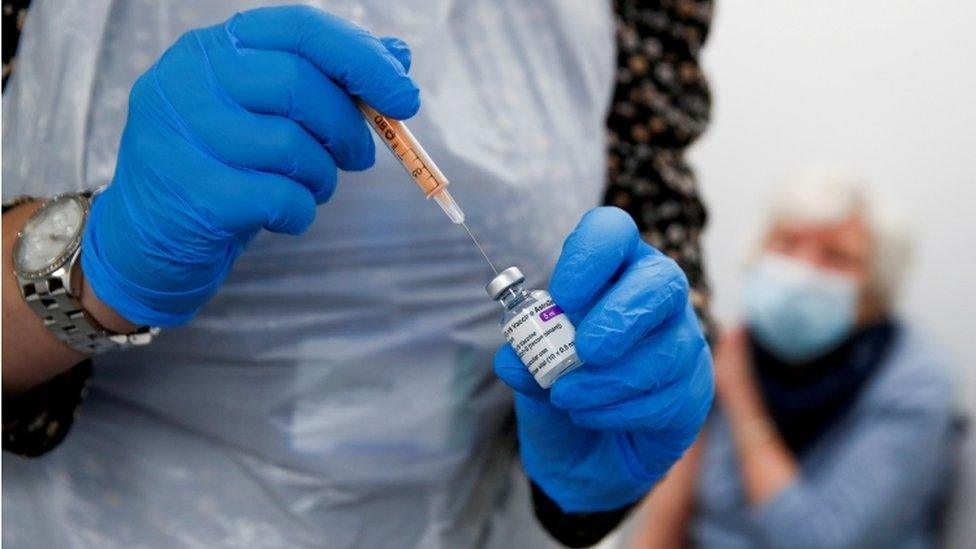Coronavirus: Where are the gaps in NI’s vaccine programme?
- Published
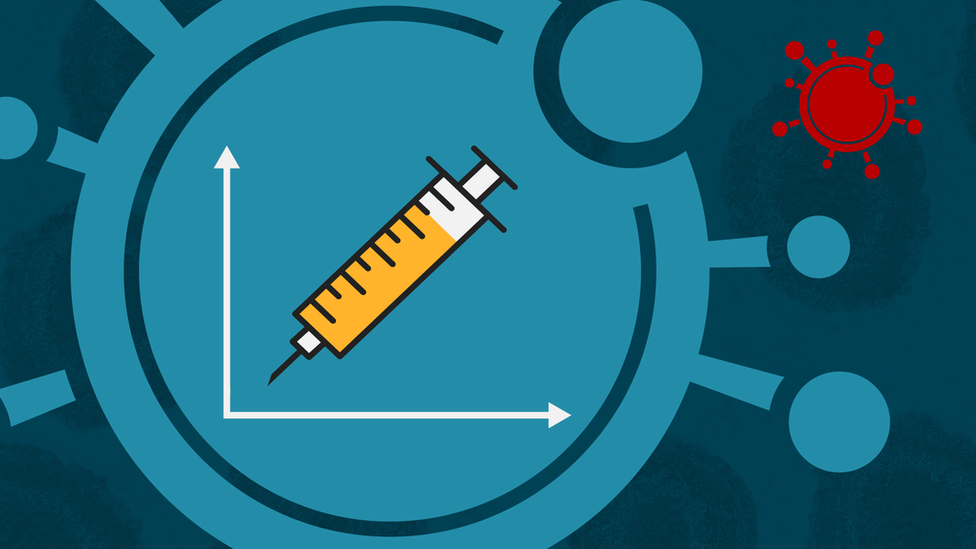
Northern Ireland has begun to emerge from lockdown.
This week also saw the limited opening of the vaccination programme to those aged between 35 and 39.
These are two significant indicators of progress towards a return to a more normal life.
So what do the stats and figures tell us?
In short, the number of vaccinated people continues to increase; fewer people with the virus are in hospital, with a small number in ICU; Northern Ireland has the highest infection rate in the UK - but it hasn't really increased.
This week we're going to take a bit of a deep dive into vaccination data, and try to find out who's been turning up to get the jab… and more importantly, who hasn't.
Vaccinations
Let's start with the basics - measured by the sheer number of people who have had a first dose, Northern Ireland's vaccination programme has been a success.
Almost 900,000 people in Northern Ireland have received at least one dose of vaccine.
That means we're closing in on 50 per cent of the overall population.

It's true that Northern Ireland is a bit behind England, Scotland and Wales in the rollout of first doses.
It's also true that the gap has been widening slowly for a few weeks. But Northern Ireland's vaccination performance is still among the best in the world.
The following are the percentages of the overall populations to have received a first dose of vaccine in the UK and Ireland:
UK - 50.4%
England - 50.1%
Scotland - 51.1%
Wales - 55.8%
Northern Ireland - 47.1%
Republic of Ireland - 18.1%
But let's say you want to find out a bit more about how the vaccination has been going - how many people in your area have had a jab? Or are there particular groups which have been slow to go and get vaccinated?

This type of information is uptake data. In order for it to make much sense, you need to know how many people are in a particular group - and how many within that group have had a jab.
This is important because these data allow policy makers to see the gaps in the vaccination programme more clearly.
Northern Ireland's vaccination dashboard, external gives some added information about the roll out, but crucially it does not include uptake data.
It does break down the number of vaccines by eligibility criteria. But this doesn't equate to clear uptake figures.
Consider a 56 year-old heart surgeon. She probably received her vaccine as a healthcare worker, and this is where she'll be placed in the figures currently published by the Department of Health.
She will not appear in the dashboard's 50-59 category.
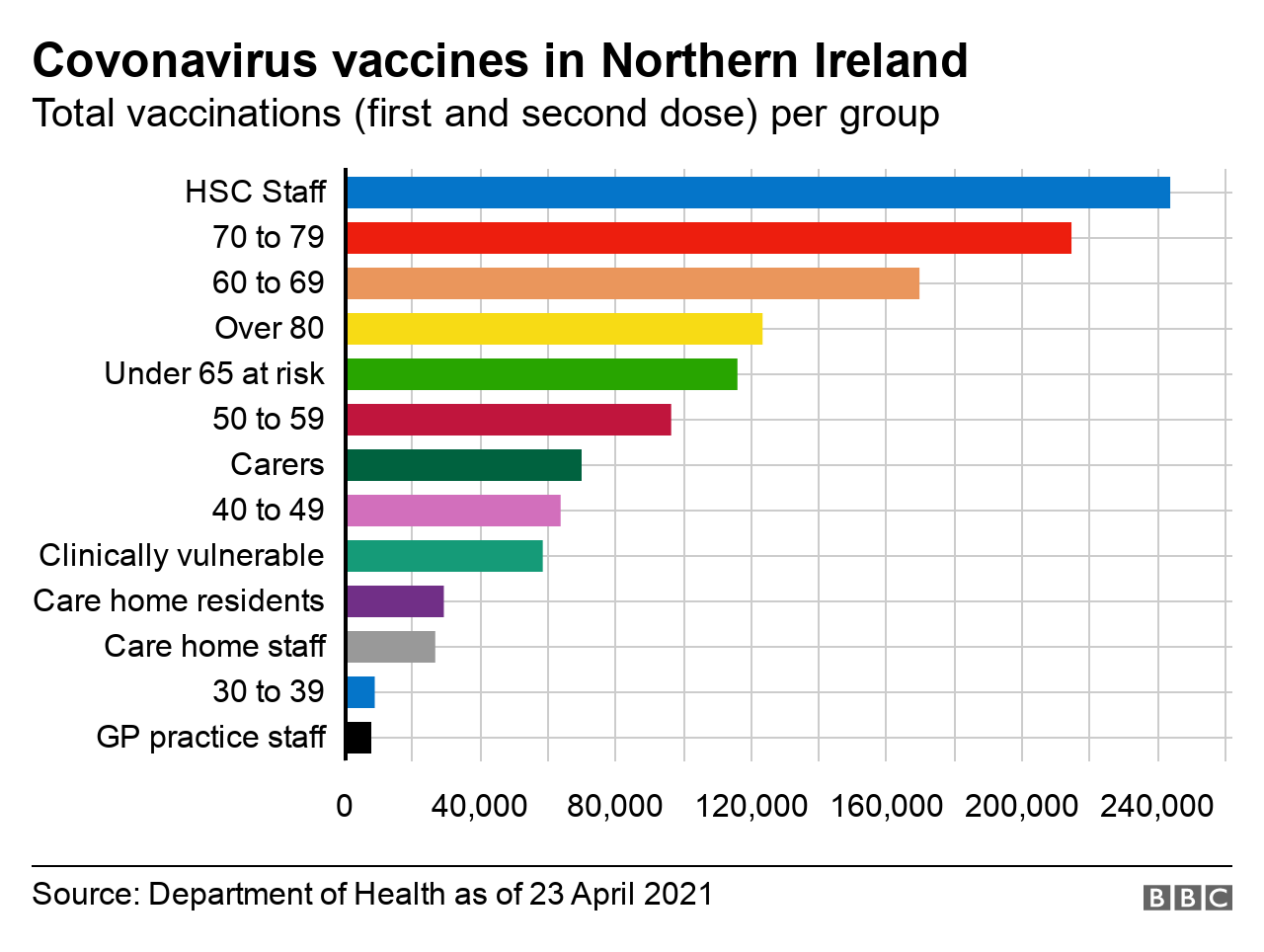
This - coupled with the fact that estimated cohort sizes are not published - means that it is impossible to obtain exact uptake data from the department's figures as published at the minute.
Over a period of months, BBC News NI has been requesting accurate uptake data from the Department of Health.
Similar figures have been publicly available in the other devolved regions of the UK for months - you can look at vaccination numbers by age group; by geographical area; by eligibility.
For example, in Scotland 62.8% of the people resident in the NHS Fife area have had a first dose. Or by local council area - Na h-Eileanan Siar (the Outer Hebrides) has the highest vaccine uptake in Scotland, with City of Edinburgh having the lowest.
In Wales, 93.7% of healthcare workers have had a first dose; 90.9% of people aged 50 and over in the council area of Merthyr Tydfil have had at least one Covid-19 vaccine dose.
In short, data published in Wales and Scotland are much more detailed than in Northern Ireland - and give the Scottish and Welsh public a much clearer picture of how their vaccine rollout is going.


There won't be enough vaccination without better information.
In the midst of a crisis, no-one could be blamed for prioritising getting vaccines into people over bean counting.
And official data on vaccination hasn't been great in any nation of the UK. The statistics regulator has repeatedly written to all four governments.
But statisticians would argue you won't get over the finishing line unless you know exactly who is getting vaccinated and, more importantly, who isn't.
There has been a big lag in uptake among some ethnic minority communities in England, in particular black African Britons, that was revealed most convincingly by a university study of GP records.
In their data, it dwarfs the gaps between rich and poor or between those with mental health problems and those without.
Any group of people who live or worship or play together who are not getting vaccinated will have very little protection if anyone in that group gets infected.
You need the data to spot the patterns to target the help to reach the people who will really need protection when we open up.
Without the data you're blindfolded.

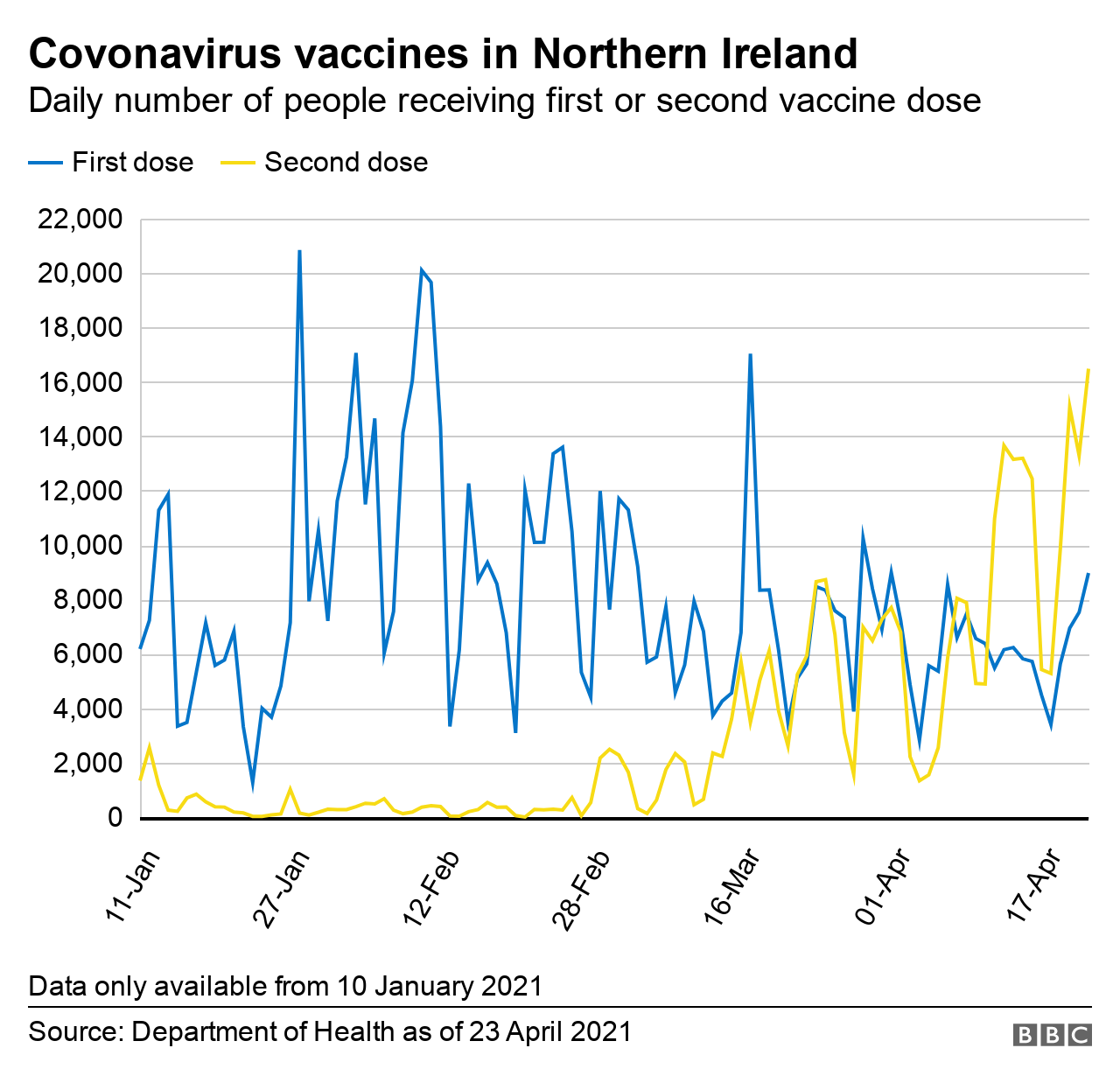
More than two months ago, the Office for Statistics Regulation (OSR) called for more transparent statistics on the vaccination programmes in the UK, external, singling out Northern Ireland's lack of "orderly release of more granular data".
The OSR told BBC News NI: "We would like to see improvements to the vaccine data for Northern Ireland as soon as possible.
"We continue to engage with the department and monitor the situation, and will make further public interventions if we consider it necessary."
The Department of Health has, on occasion, published some uptake data via Twitter or by press release to the media. These numbers do not appear on the vaccination dashboard.
The following is the most up-to-date uptake data for first doses by age group in Northern Ireland (up until April 21):
94% of over 80-year-olds
93% of 70-79 age group
96% of 60-69 age group
81% of 50-59 age group
56% of 40-49 age group
The Department of Health does now have uptake data which allow officials to see where added effort might be needed to encourage people to get a vaccine jab - this informed the recent decision to have pop-up clinics.
But the question remains - why is Northern Ireland so far behind in the publication of this information?
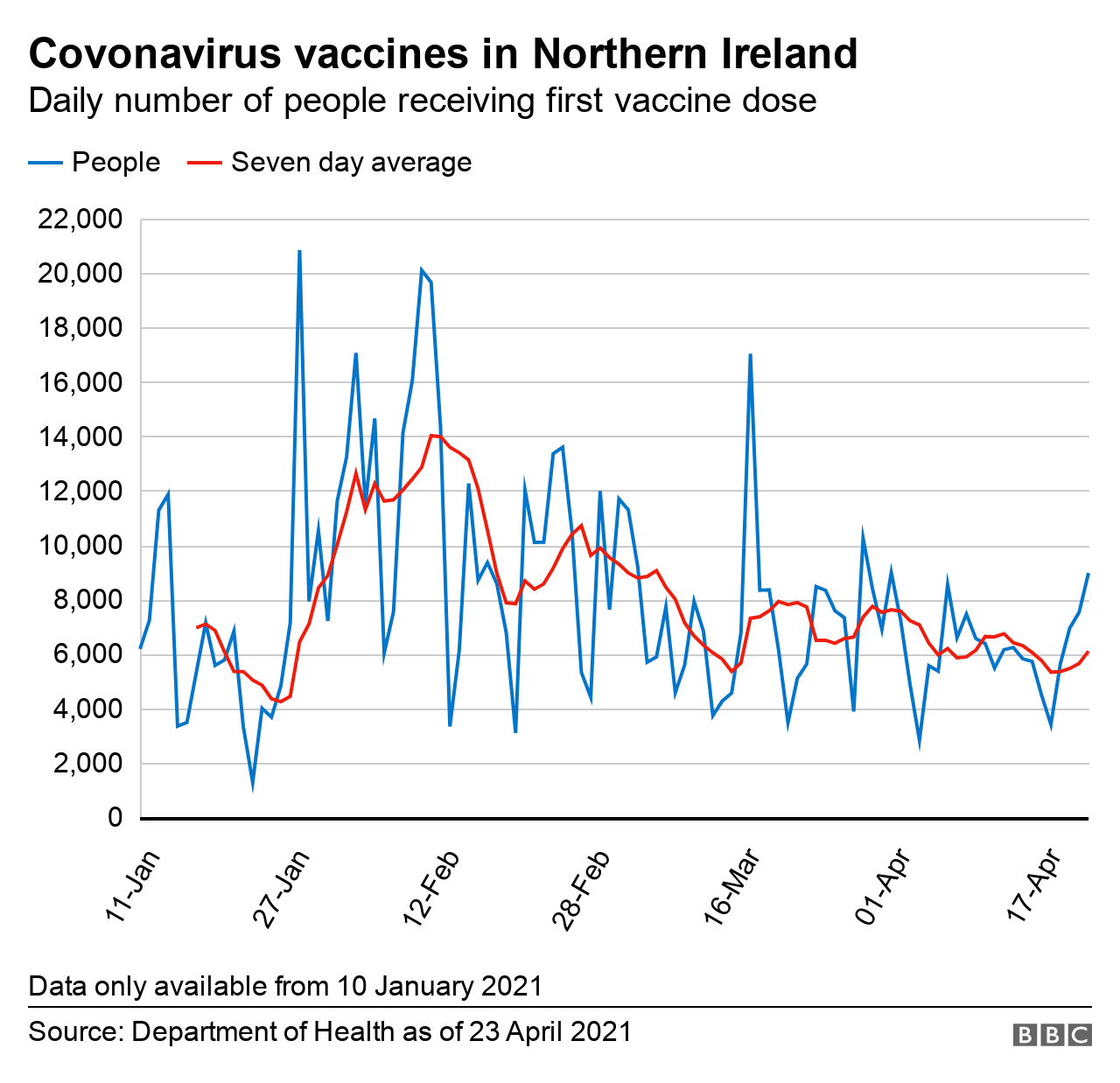
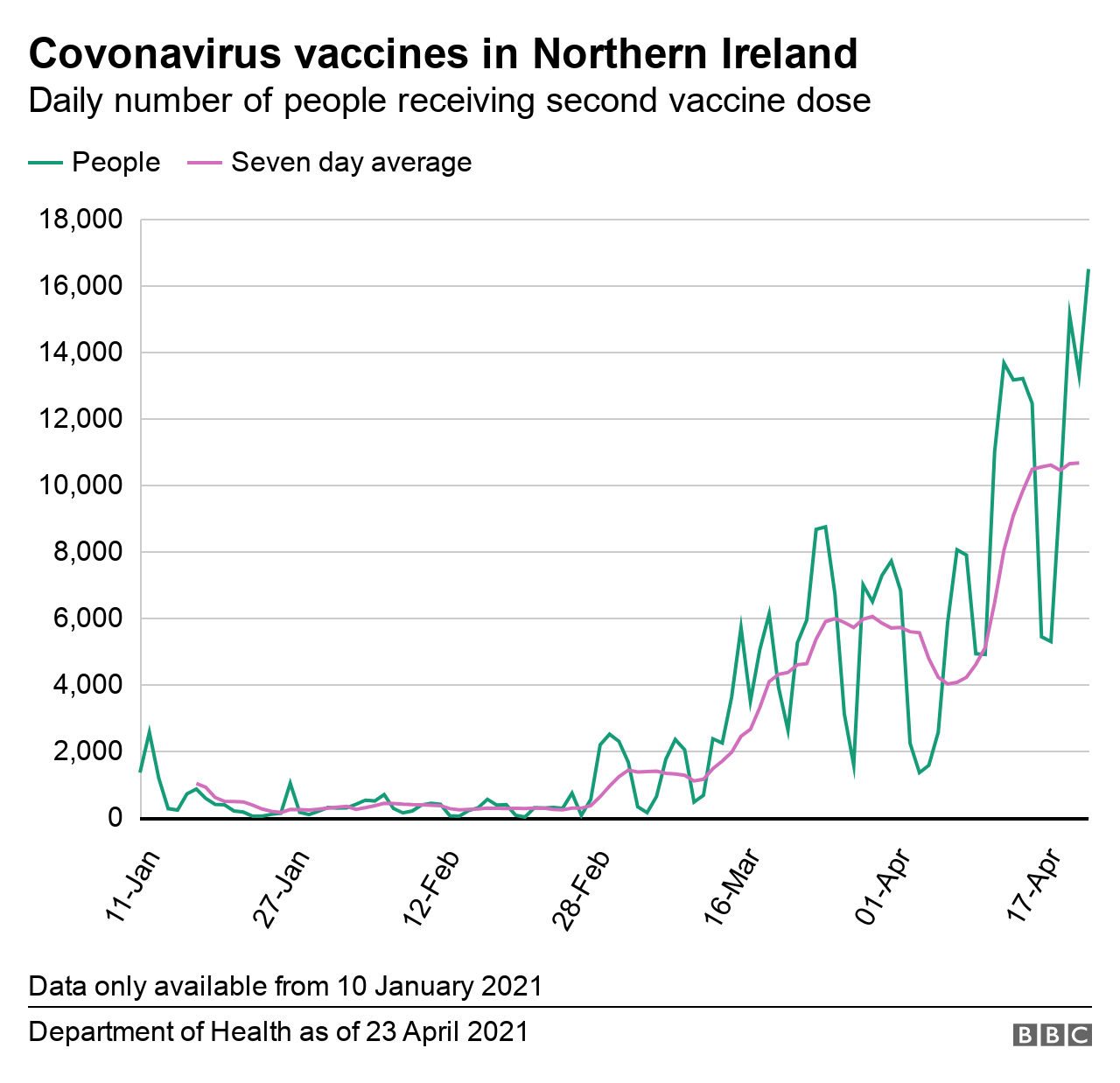
The Department of Health says there have been a couple of factors which have hampered its efforts -poor data collection in the early days of the vaccination programme; the fact that much of the information was coming from lots of different places and on different systems; and a relatively smaller digital development team.
Dan West is the chief digital information officer at the Department of Health.
"We have not a technology problem here. We have a data problem and that data problem is partly a function of the pace at which we're seeking to deliver vaccinations to the community, particularly vulnerable members of the community in Northern Ireland.
"And that pace is hampering our ability to solve some of those data availability and data quality problems," he said.
Mr West added that data collection was a secondary consideration to delivering vaccine doses.
He told BBC News NI that a new vaccination dashboard is due to be launched shortly.
The publication of clear, detailed vaccination statistics will allow the public in Northern Ireland to get a much better idea of any gaps in our vaccine rollout.
Infection rates
Northern Ireland has the highest infection rate in the UK.
Here are the infection rates according to figures from the UK government, for the seven days up to April 18, per 100,000 population:
UK - 24.8
England - 24.5
Scotland - 27.9
Wales - 14.9
Northern Ireland 41.1
However, rather than Northern Ireland's rate increasing, it was a case of our rate staying fairly much static while the other rates in the UK dropped.
The Republic's rate for the same period was 52.0 cases per 100,000 population.
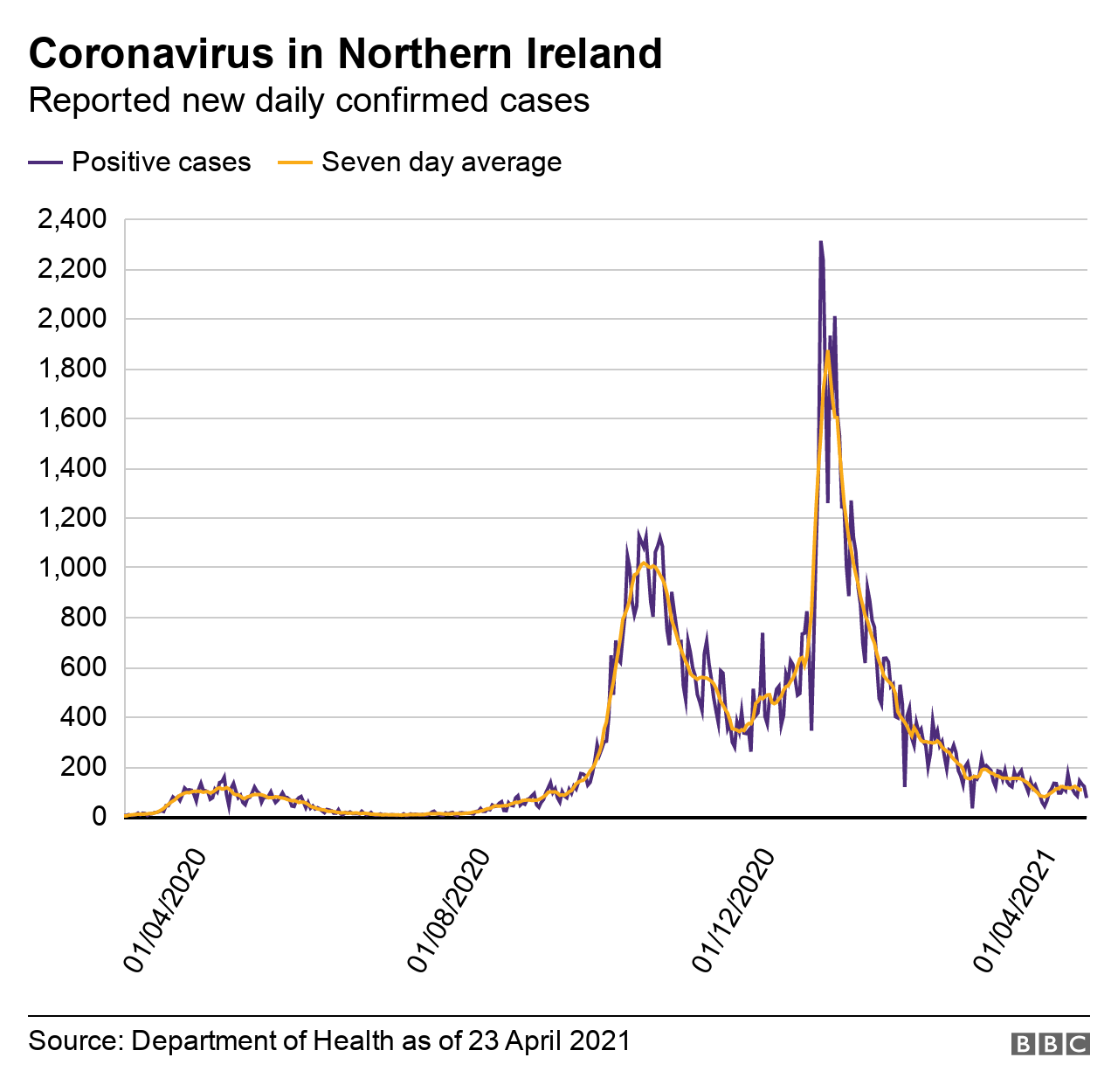
It's also worth noting that the rates for all the UK nations - including Northern Ireland's - are much lower than they were in February or March. The general trend continues to be downward one.
Northern Ireland's slightly higher rate has been driven largely by the incidence of cases in Derry & Strabane Borough Council.
The most recent data from the Department of Health indicate that Northern Ireland's infection rate is being to slowly fall again.
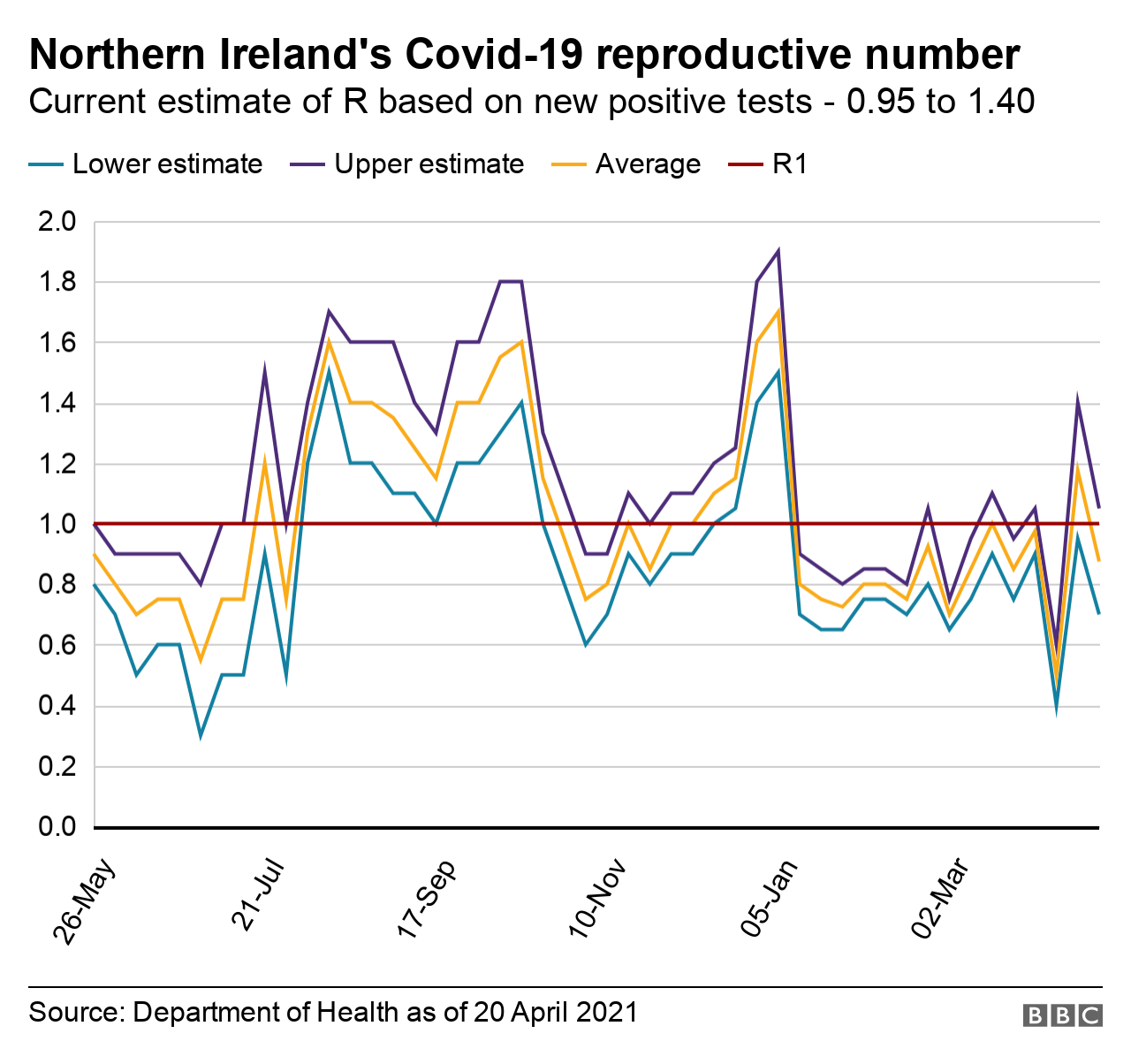
Hospitalisations
Northern Ireland's trend of a falling number of inpatients with Covid continues.
Currently, there are 64 patients in hospital with the virus - seven of them in intensive care wards.
For comparison, at the peak of the winter surge the respective figures showed more than 1,000 inpatients with the virus and more than 70 of them in ICU.
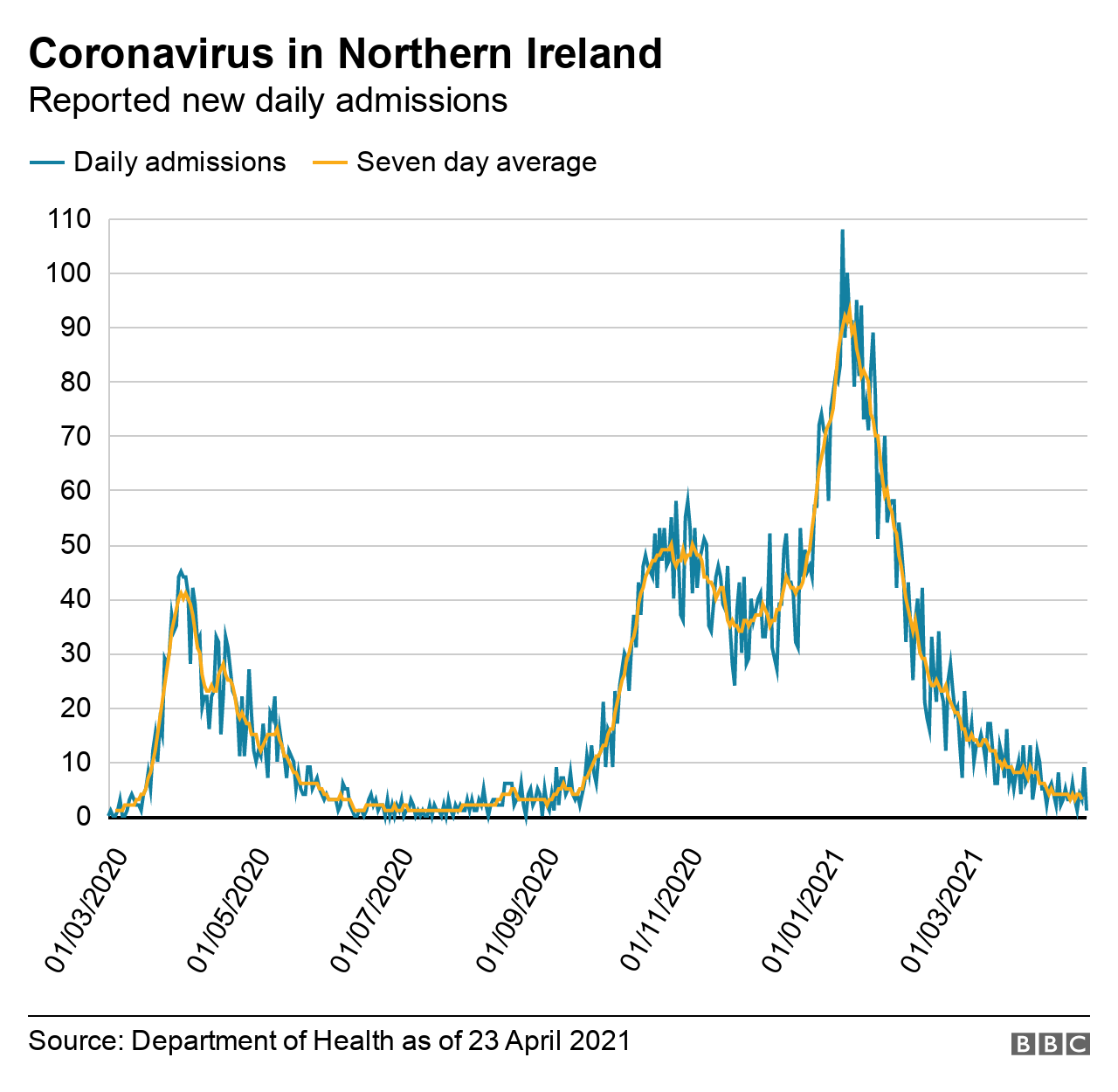
At the moment, we can expect about four patients to be admitted each day into hospital with the virus.
This low rate should - in theory - see those falling inpatient numbers continue.
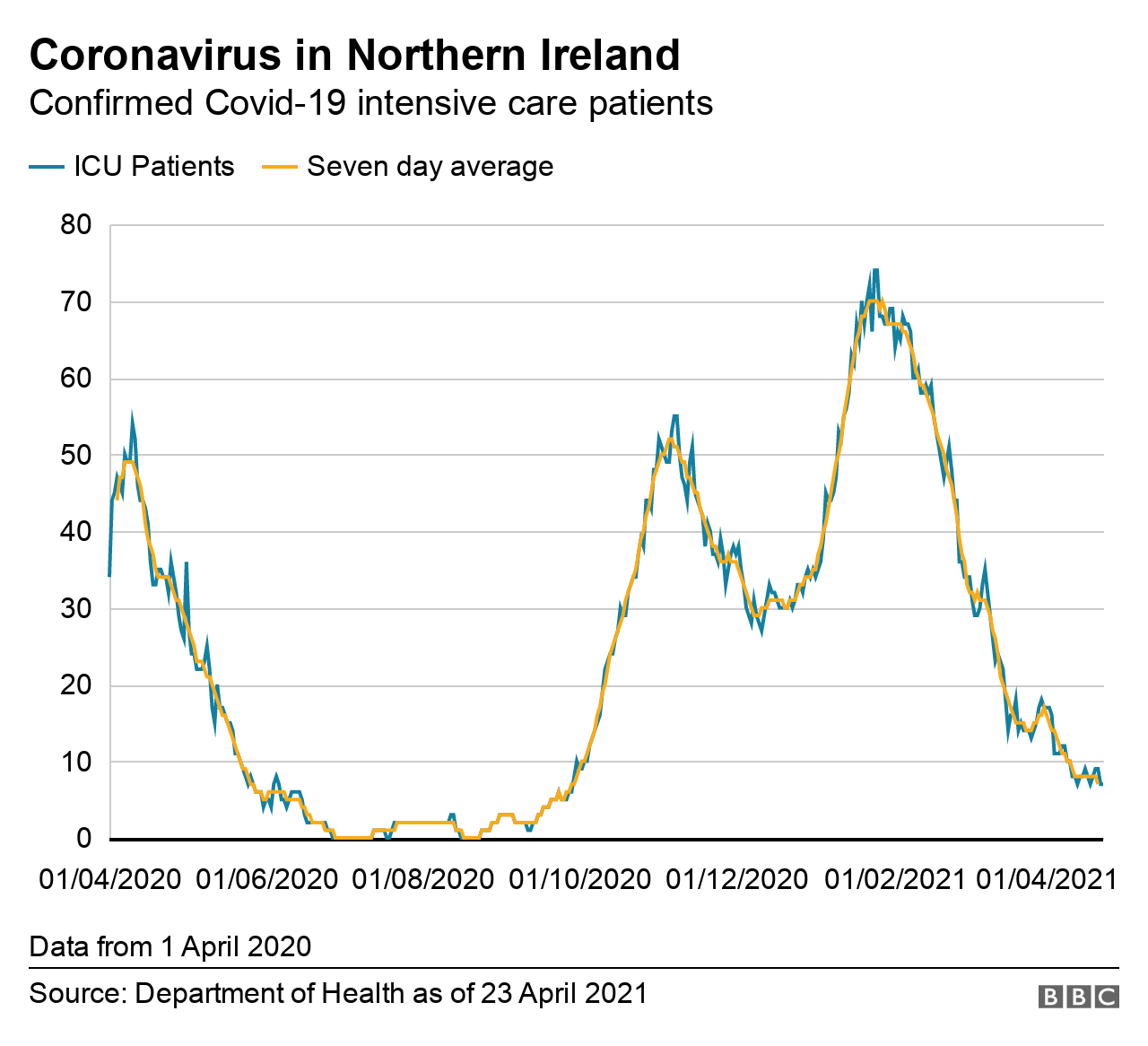
Deaths
The death rate, as published by the Department of Health, is exactly as it was last week.
The rolling average is one death per day.
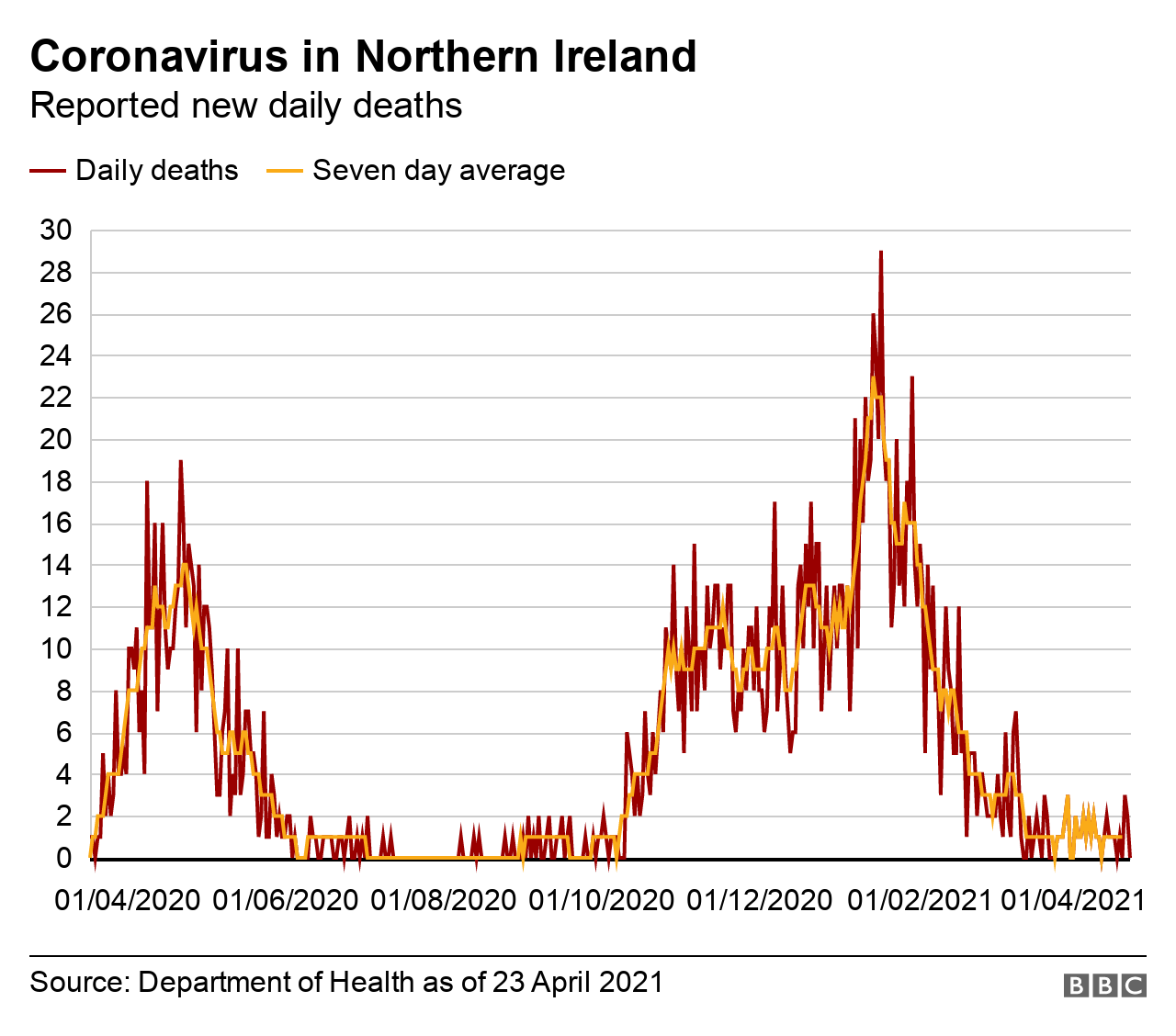
By population, this is the highest rate in the UK, but remains much lower than the Republic's death rate.
The following are death rates for the seven days up until April 20, per 100,000 population:
England - 0.13
Scotland - 0.05
Wales - 0.12
Northern Ireland - 0.36
Republic of Ireland - 0.94
Without doubt, vaccinations have been having an impact on the death rate in the UK.
Related topics
- Published23 April 2021
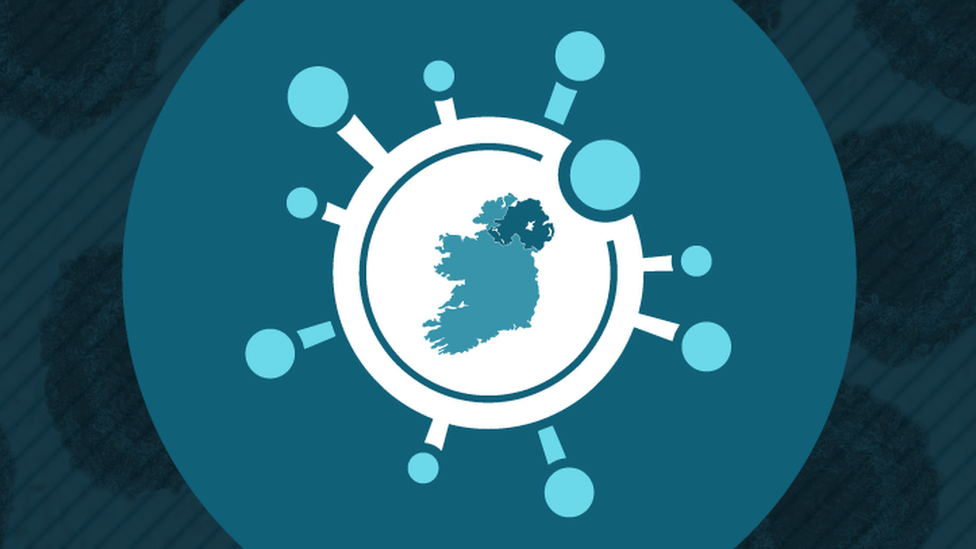
- Published21 April 2021
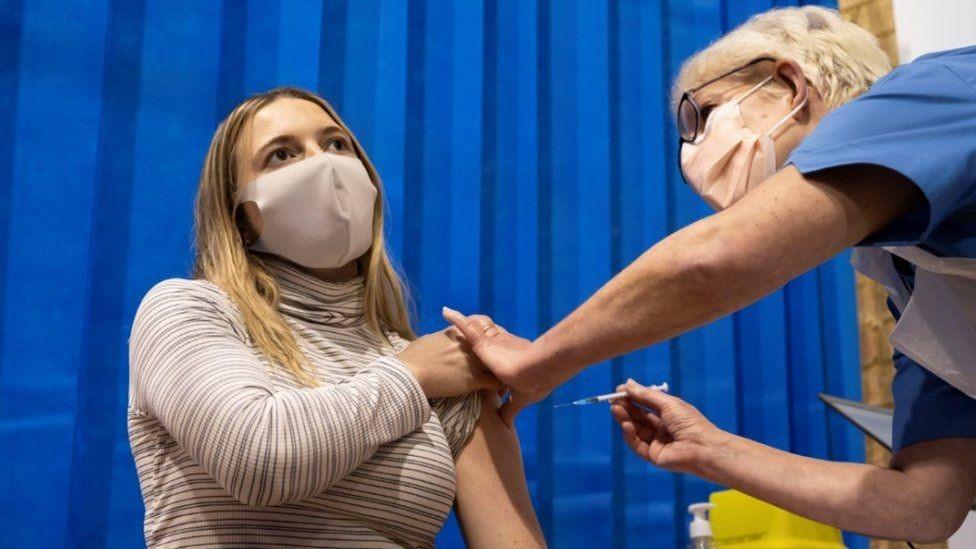
- Published19 April 2021
